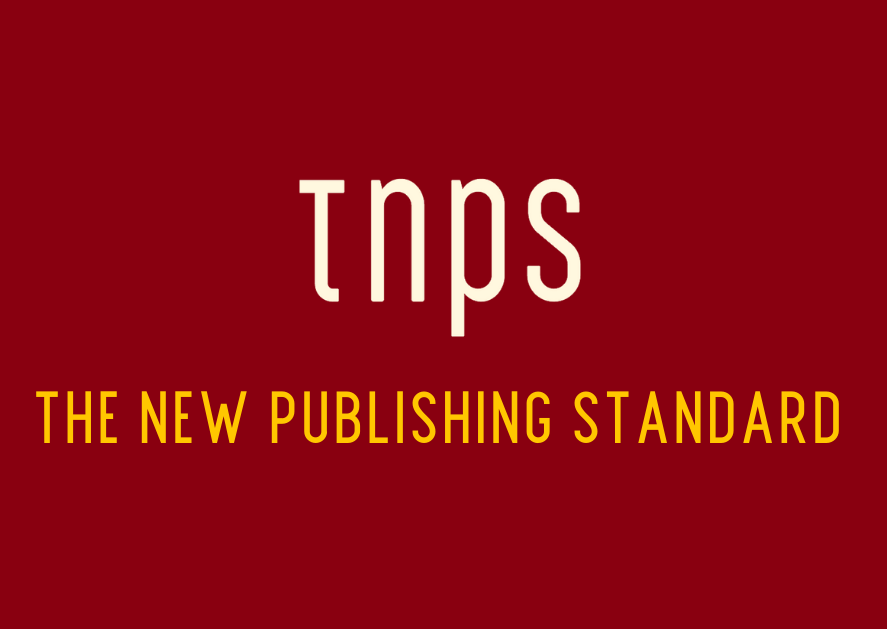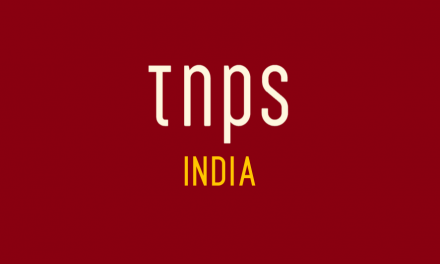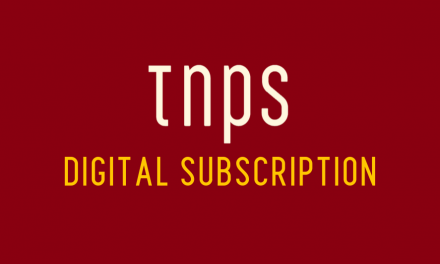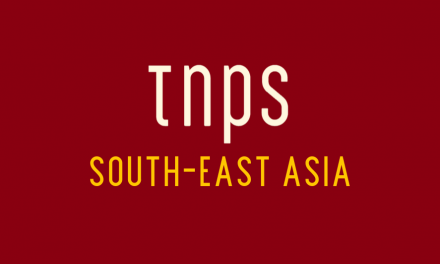We live in interesting times.
As the first issue of The New Publishing Standard rolls off the cyber-presses this September, anticipation is building for the two biggest publishing events of the western world in 2017. The Frankfurt Book Fair, and the tenth anniversary of the Amazon Kindle ebook store.
Ten years ago one might, if brave, have predicted that the Frankfurt Book Fair would not just maintain, but grow its stature, eclipsing the USA’s New York Book Expo and the UK’s London Book Fair to become the pre-eminent international book fair of the western world.
But there can’t be a person on the planet who, in the months before the Amazon Kindle store was rolled out to an ebook-indifferent reading public, could have predicted the way in which the Kindle store would not just disrupt, but transform the global publishing industry.
Not just in changing the way we read – ebooks long pre-date the Kindle store, but it took Amazon to make the ebook a viable mainstream alternative to the printed page. But in changing who got to be read – facilitating the so-called self-publishing revolution.
Ten years on, the publishing world is a different planet. As we wind down this decade and prepare to engage the next, analogue and digital co-exist, not quite in harmony, not quite at war, in a publishing landscape where the old rules are in tatters and the new rules are being invented on the fly.
From nowhere China has risen to become the second largest publishing market in the world, and a respected member of the IPA, opening its doors to western publishers and venturing out into the global markets with its own publishing brands.
India, not long ago considered a Third World publishing backwater, is now by some estimates the sixth largest publishing market, and potentially a bigger English-language market than the UK.
In both countries the ubiquitous Amazon is playing a leading role. We’ve seen more than a dozen Kindle ebook stores materialise worldwide, in places as unlikely as India, China, Brazil and Mexico, as well as Japan and across western Europe. In India Amazon now owns one of the country’s biggest publishers, Westland.
The tenth anniversary of the Kindle store also marks perhaps the least-predictable aspect of Amazon’s publishing disruption – the opening of Amazon bricks & mortar bookstores in the USA.
But of course Amazon is just part of a much bigger story of change and disruption in the global publishing industry.
Back when the Kindle store launched in 2007, dedicated e-readers were the device to be seen with. Reading on mobile phones was dismissed as a Japanese fad that would never catch on outside that country.
The first iPhone had just been released in 2007. The iPad had yet to be invented.
In 2007 MySpace was the dominant social media player in a world where social media was all about still images of fluffy kittens and personal exchanges. Facebook, which had begun life as a college boys’ stunt to get girls, was three years old but regarded by many as a no-future fad. Fast forward to 2017 and Facebook has two billion users, almost all on mobile devices, in places that, back in 2007, just ten years ago, could only dream of even owning a phone, let alone being connected to the internet.
In 2017 literally billions of people around the world are connected to the internet, having completely skipped the tortuous telephone landline and desktop internet era, and have gone straight from no phone, no TV and no internet to 4G smartphones on which they are downloading the latest movies and TV.
Netflix, which began life in 1997 sending out films through the post on DVDs, now streams video to 190 countries around the globe.
And while there is all the usual the-sky-is-falling talk of shortening attention spans and of video and games stealing eyeballs and dollars that might otherwise have bought books, the reality is the video boom is good news for publishing. Many films, TV and games are derived from books, and many films, TV and games become books.
Or ebooks.
Ebooks, back in 2007 the novelty fare of a handful of rich countries, are today a truly global phenomenon.
In 2017 pretty much anyone anywhere on the planet can download ebooks, bypassing the print distribution hurdles that defined the analogue era and ensured vibrant publishing industries were the preserve of a handful of rich, developed nations.
The opportunities unfolding for publishers today are hard to exaggerate. From the doom and gloom years of 2007-12, when we saw the collapse of Borders and there was talk of publishers rearranging deckchairs on the Titanic as bookstores lined up to close, shelf-space contracted and the very existence of the printed book was in question, today publishing’s future has never been brighter.
That’s not to say there are not problems ahead. There is no room for complacency.
Barnes & Noble may or may not still be here in another ten years. It’s a safe bet Amazon will be, and who knows how many bricks & mortar bookstores Amazon will be fielding in the USA by 2027, or how many publishing imprints Amazon will have.
And while, as above, pretty much anyone anywhere on the planet can in theory download an ebook, the reality is a little more complex.
Nook of course is now only available in the USA.
Apple has not a single iBooks store in Africa and only one in Asia.
Amazon has a dozen or so Kindle stores and serves a few adjacent territories, but elsewhere either imposes whispernet surcharges or the Kindle store is not visible at all.
Google Play Books has an impressive 75 localised stores, but for anyone outside those countries the Google Play Books stores do not exist.
Which leaves Kobo the only western ebook retailer with truly global reach, but with only a handful of localised stores buyers that reach is token.
No question there are great challenges ahead. But also great opportunities.
Facebook, by 2030, is expected to have five billion global users. That’s a lot of potential readers if publishers can connect with them and sell them ebooks, and a reminder that, important as the US book market is, it is not the only show in town. In fact, the entire US population will be just 6% of that projected Facebook reach.
The next ten years are going to see the globalisation of publishing accelerate, fragment and veer in new directions as we enter the era of 5G and the Internet of Things, and start thinking about 6G and the era of the Internet of Everything.
Some of the established players may not survive the course, and new players will emerge, often from the least likely places, to challenge the very definition of publishing. Artificial Intelligence and machine learning, virtual reality and augmented reality, concepts that ten years ago were borderline science-fiction, will be the new norms, along with crazy concepts and models yet to be even thought of, that will be tomorrow’s science fiction and the following year’s game-changers.
New formats. New business models. New content delivery mechanisms. New content creators. New content. All contributing to a new publishing era where territorial boundaries are all but meaningless, where the entry-barriers are all but non-existent, and where creativity will have free reign.
We are witnesses to, and participants in, the early stages of a Global New Renaissance quite unparalleled in human history. And the journey is just beginning.
Join us as we chart the next ten years of publishing’s evolution, with news, insights and analysis of the fast-changing global publishing industry.
On behalf of our publisher, Antonio Tombolini, and myself, Editor-in-Chief Mark Williams, welcome to The New Publishing Standard.






Thank you for sharing a detailed and appreciated overview.
Thanks for stopping by, Eiry.
This site is a great idea. Thanks for doing it.
Our pleasure, John. Hopefully it will add to the publishing debate.
The changes in the past decade are truly amazing, and I don’t think the average reader is aware how seismic those changes have been. It’s great that you’ve started this site to keep us up to date. Best of luck with it!
But I’m not finding any “share” buttons. Would it be possible to get buttons to share to Twitter, FB, etc?
Thanks for pointing that out, Anne. Most remiss of us! We’ll get that fixed asap.
Mark, congratulations on starting up TNPS, very exciting. You had dropped off my radar screen for a year or two and I’m happy to be reading you again! As an American, it’s always like opening a window, when we get a whiff of the world view. So I look forward to your continued posts, your forward-reaching perspective, your well-researched content about the global marketplace and its trends, and your enthusiasm. I’ve missed you!
I’m not sure how an indie American approaches the print aspect of distant global markets (print and distribute books from China or India?), or if there are huge, far-away ebook distributors I don’t even know about that I should be listed with, but maybe these are subjects to eventually be unfurled in TNPS. It was definitely through you that I found StreetLib, who I adore.
Again, congrats, and happy writing!
Thanks for the kind words, Wendy!
Due to tech reasons accessing the net here in West Africa I largely abandoned my MWi presence and moved to Facebook groups, which were more friendly to a Third World connection.
TNPS is aimed at a wider audience that just indie authors, but I’ll shortly put together some indie-specific practical guides to far-flung distribution for the Facebook Group The International Indie Author – https://www.facebook.com/groups/441469159372773/. Check the group archives for lots of past posts on this topic over the “missing” years. 🙂